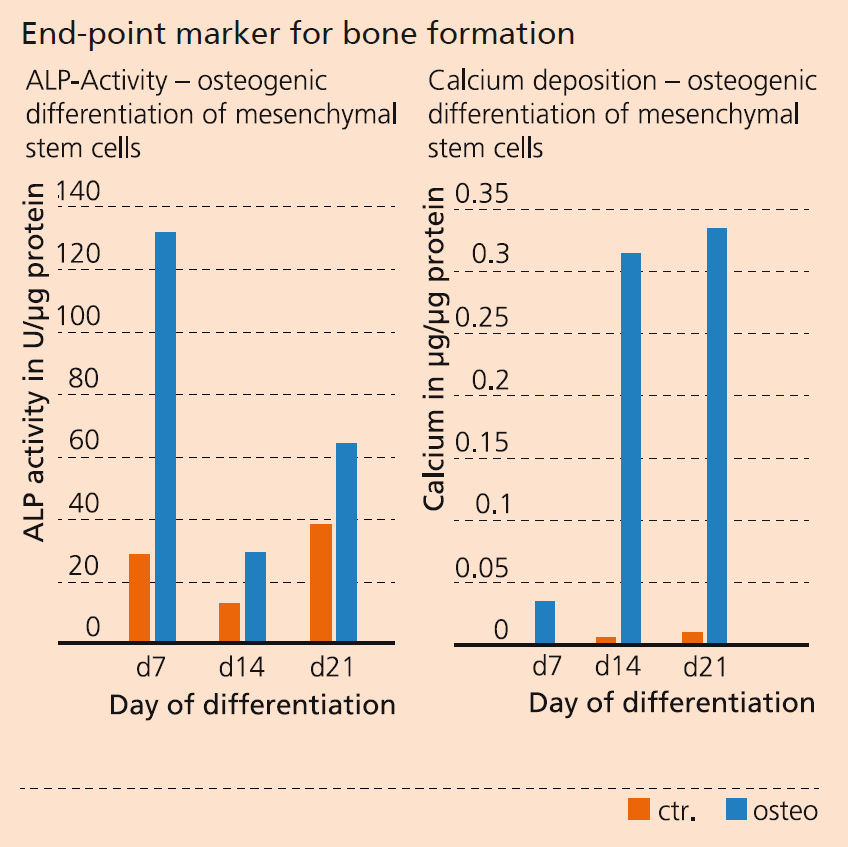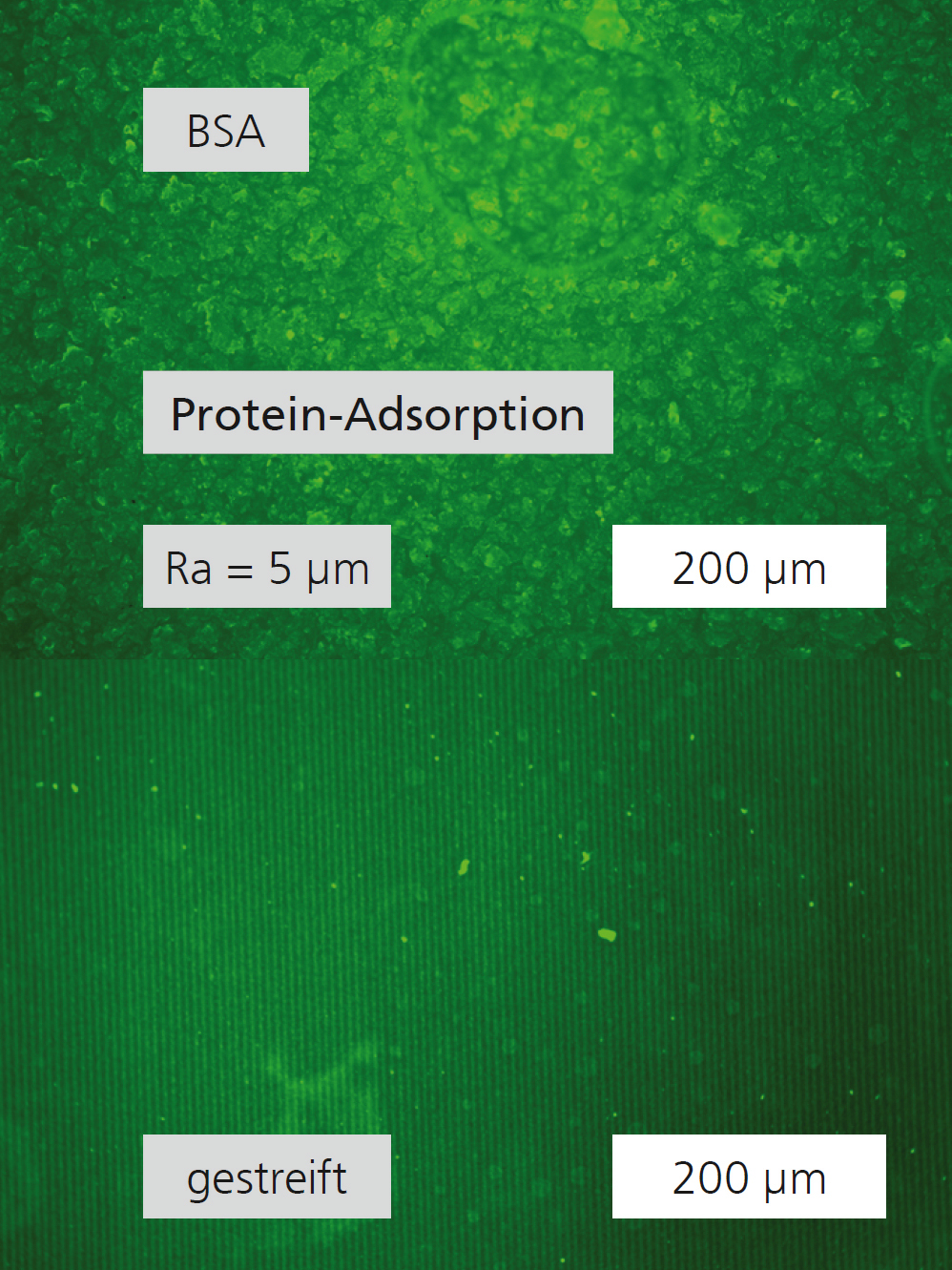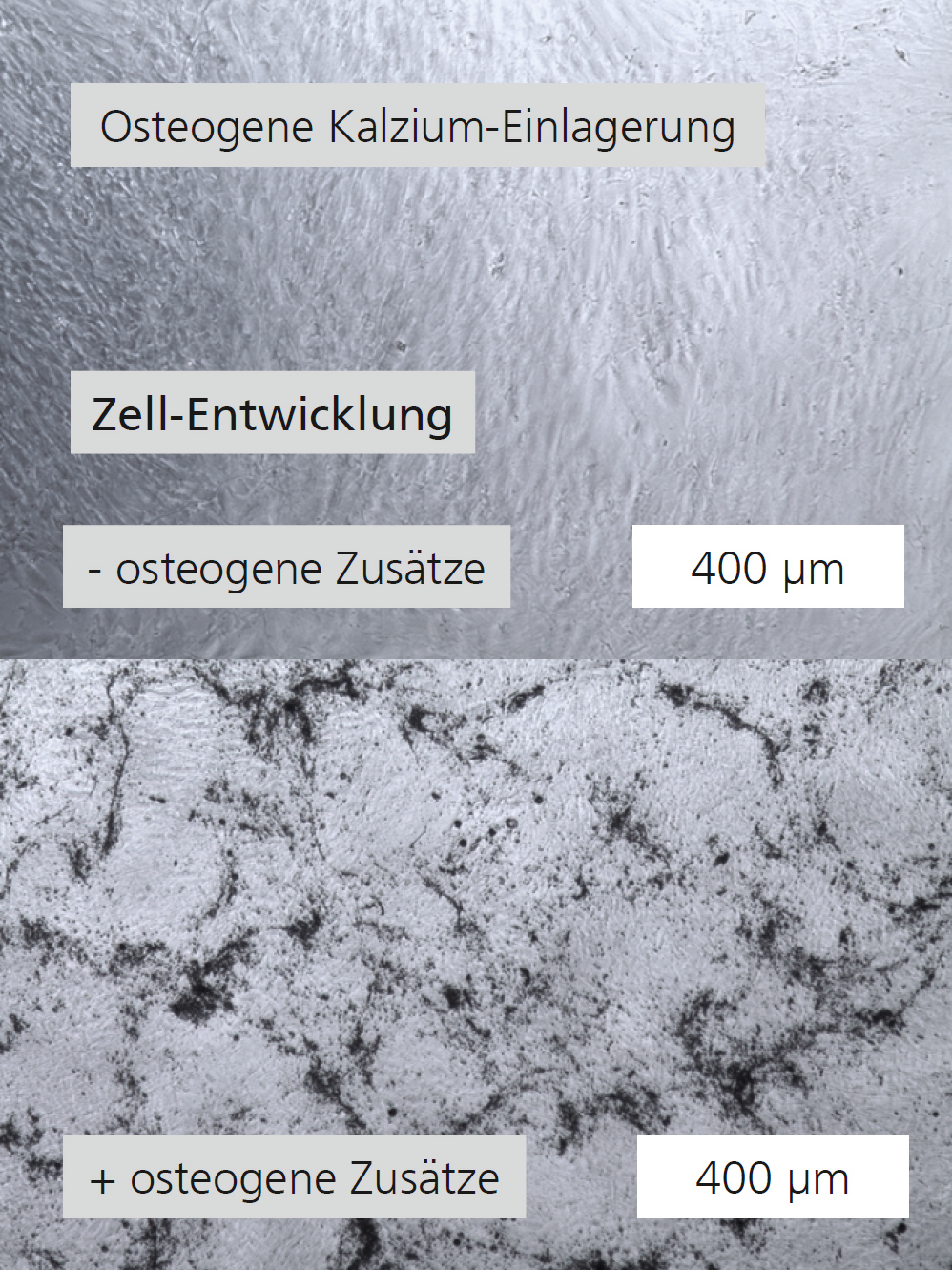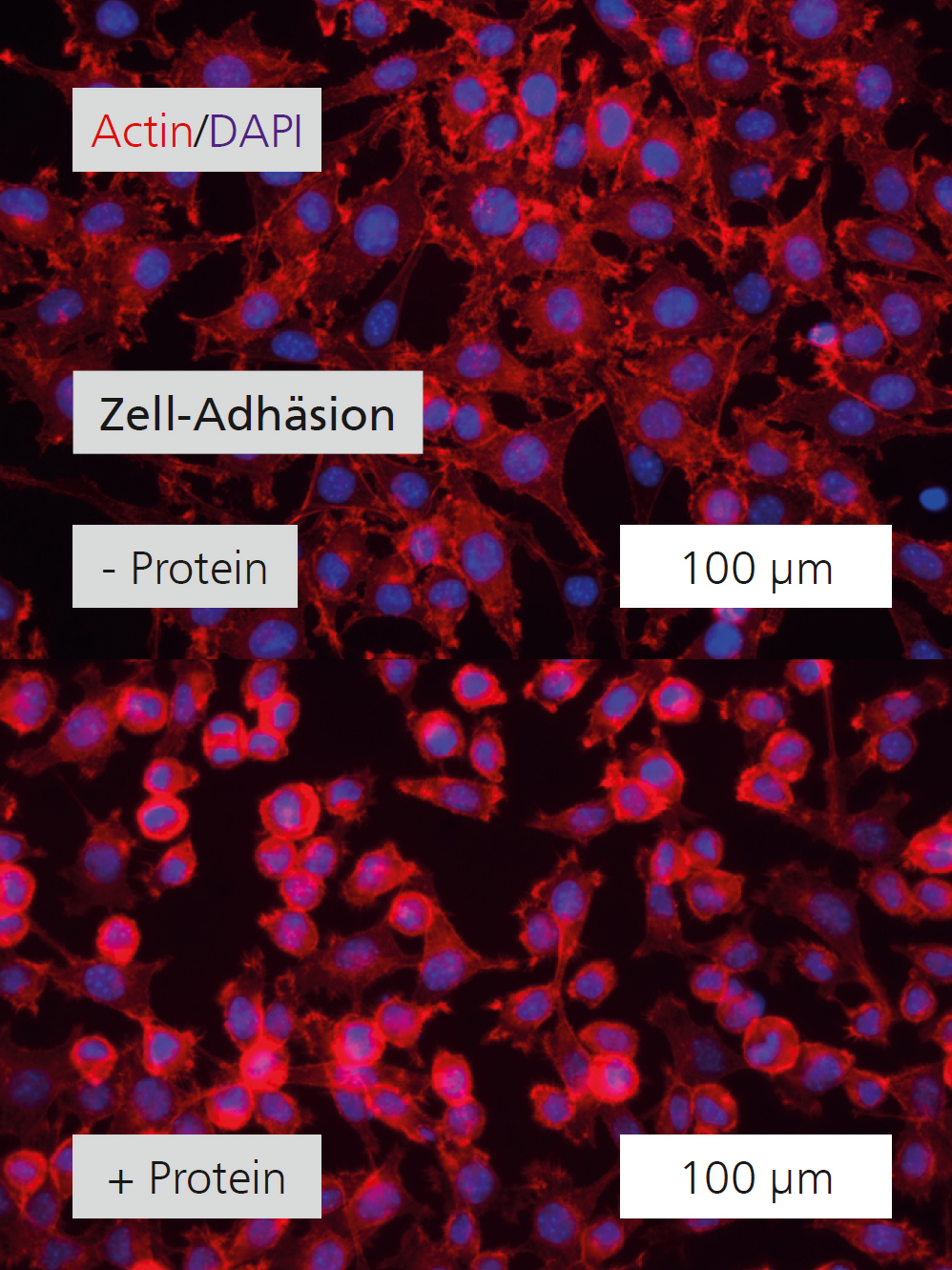To date, only a few standardized test methods exist for reliably assessing implant materials in the laboratory with regard to their compatibility within the biological system. As soon as an implant is introduced into the body, initial contact with blood causes a kind of preconditioning of the surface. Here it is important to understand what exactly happens on the surface. Fraunhofer IKTS is concerned with the following questions: How selective are material surfaces in terms of protein attachment? For how long are proteins stable or functional? How does the preconditioning of the surfaces control the interaction of the material with the surrounding tissue and immune cells?
IKTS develops targeted methods and technologies to characterize protein adsorption as a function of surface properties. We examine whether the attachment of proteins can be influenced solely via the structure of the ceramic surface, or whether a targeted functionalization of the surfaces is essential for optimizing the material for biomedical applications. Researchers were able to demonstrate that proteins homogeneously attach themselves to the untreated ceramic (Figure top-left) and align themselves, for example, along a stripe pattern on doped silicon (Figure bottom-left). The protein-cell-material interaction, with a focus on protein-dependent cell adhesion, can be detected by fluorescence labeling of suitable cell structures (Figure center: nucleus blue, elements of the cytoskeleton – for example actin – red). For this, the ISO standard 10993 and the common fibroblast cell line L929 are used. In order to assess the osseointegration, i. e. the ”ingrowth” of the material into the bone, differentiation tests on material surfaces are performed. In addition to using cell lines (MG-63, SAOS-2), which provide rapid – but not patient-specific – evidence, IKTS is currently working on human mesenchymal stem cells (bone marrow), which are isolated and grown at the institute, from healthy donors. Analytical end-points for the assessment of the osseo- integrative properties of material surfaces are defined: a suitable early marker is the activity of alkaline phosphatase, ALP (Diagram 1), followed at a later point by calcium incorporation (Figure right, Diagram 2).



